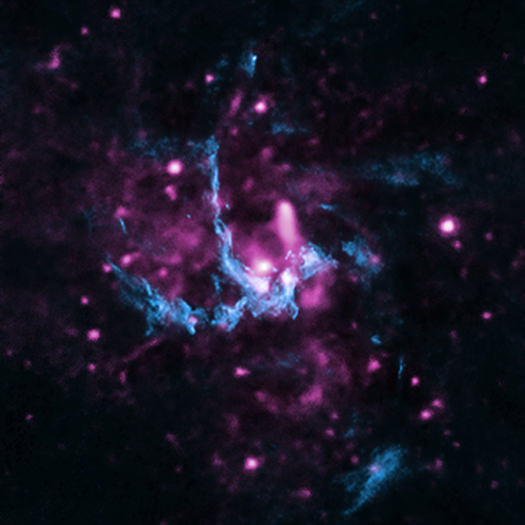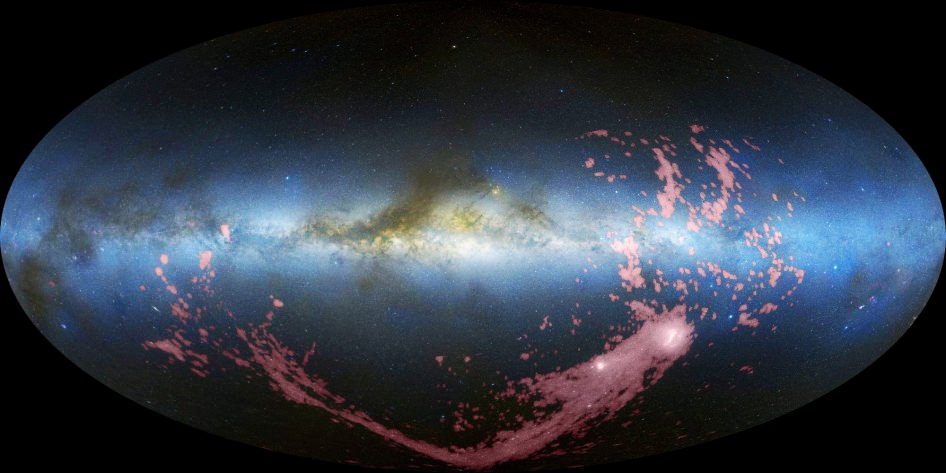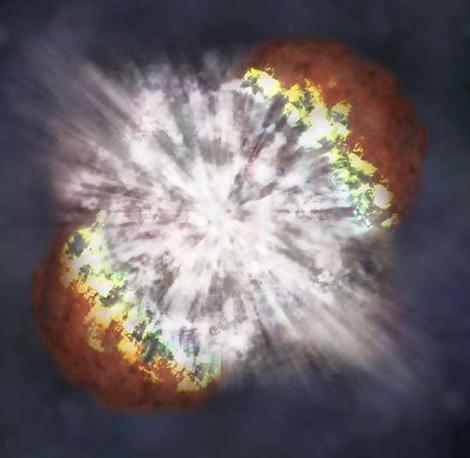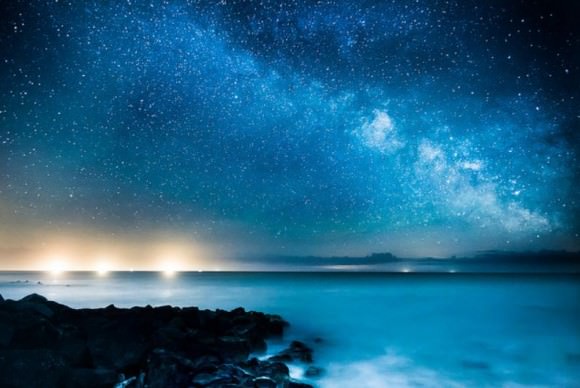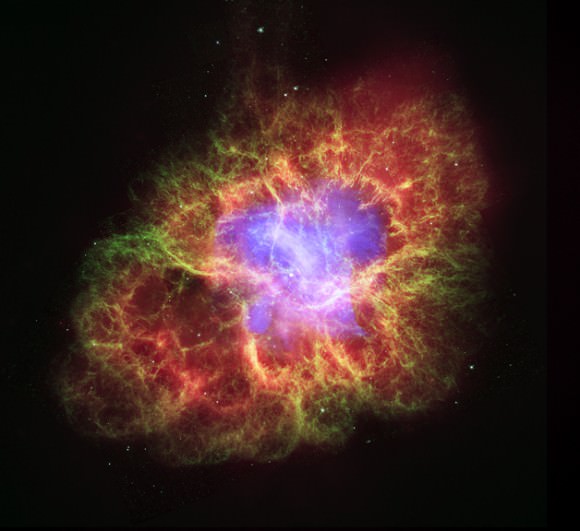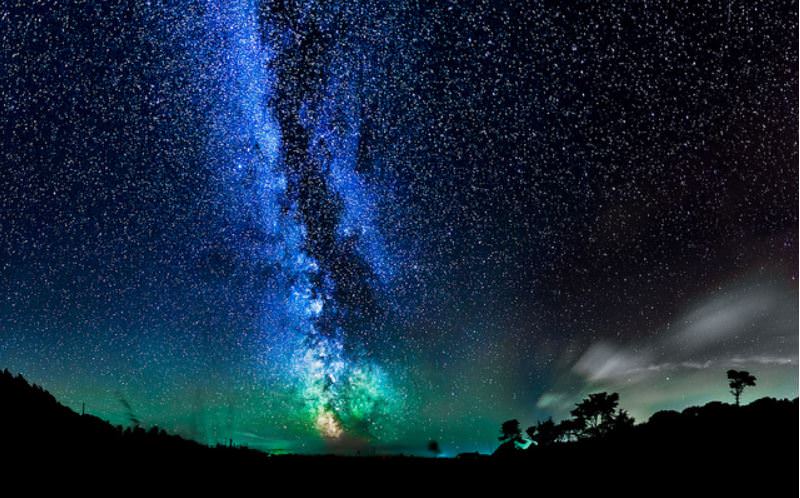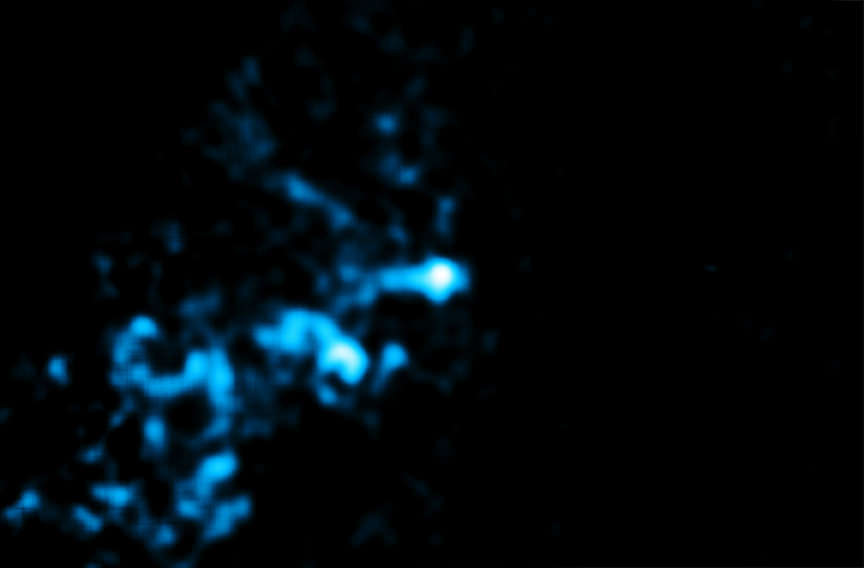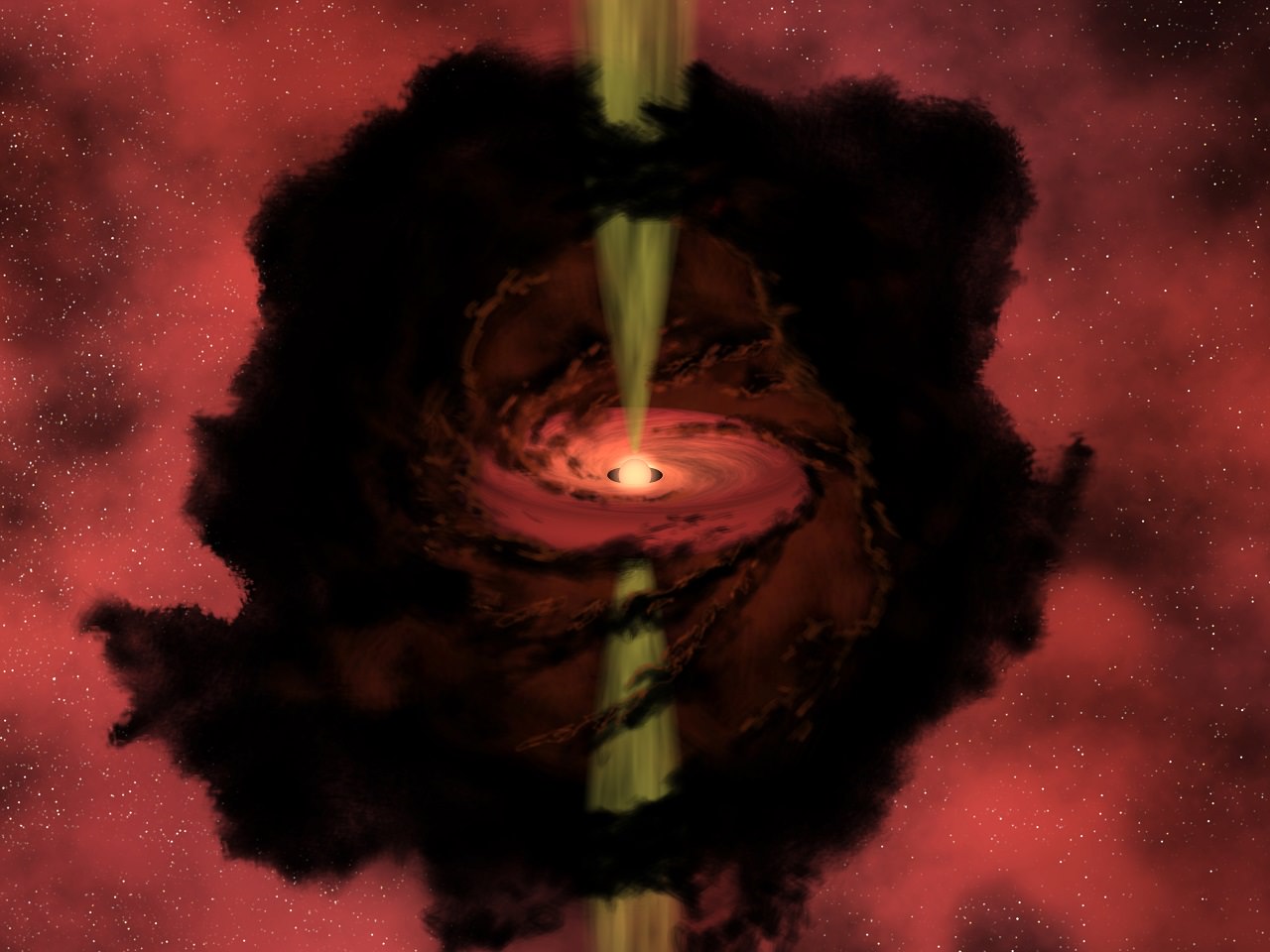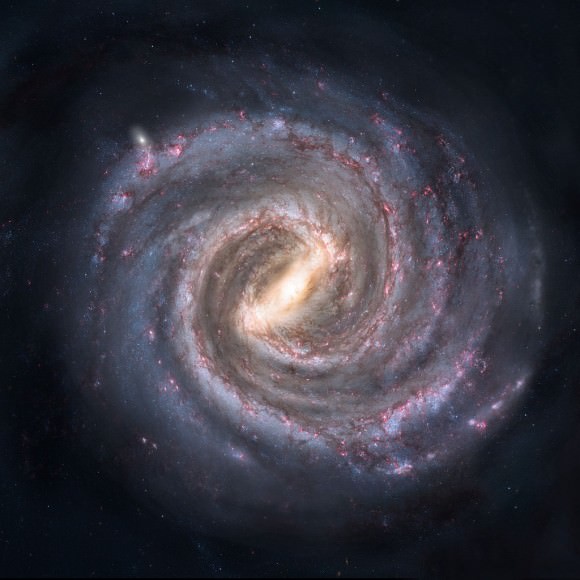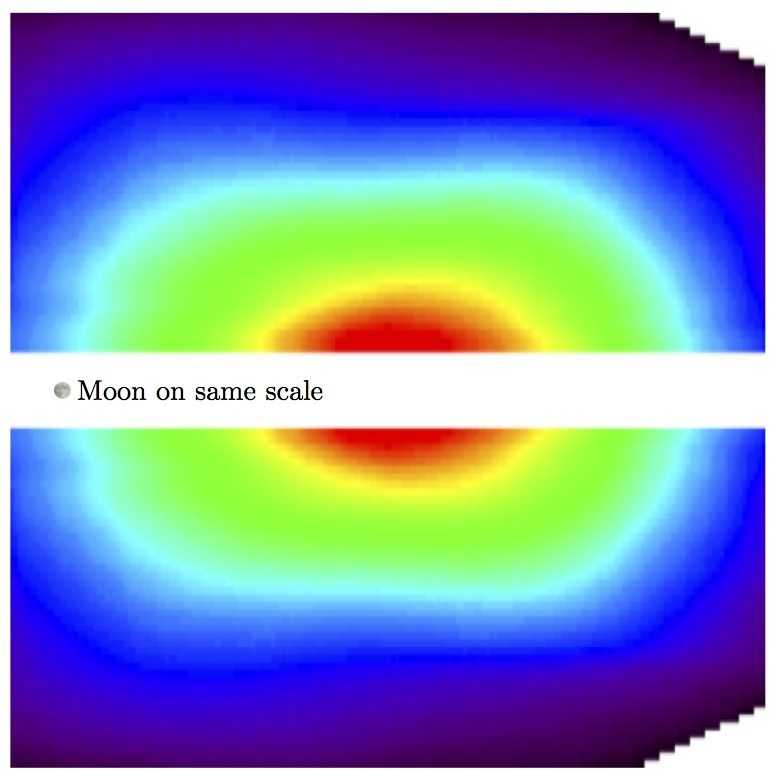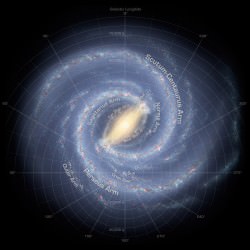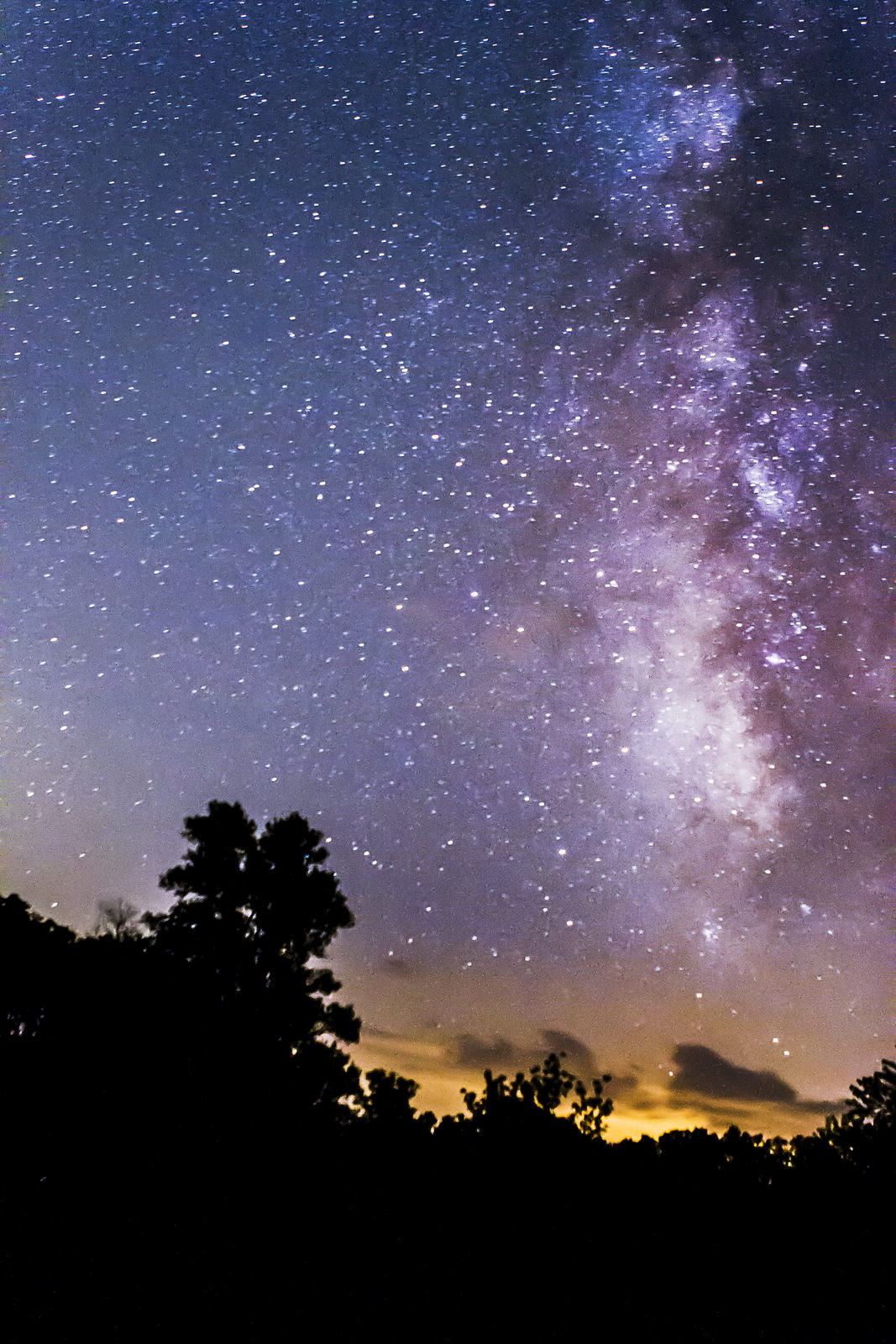The early universe was sizzling with active galactic nuclei (AGN) — intensely luminous cores powered by supermassive black holes — most of which could outshine their entire host galaxies and be seen across the observable universe.
While our central supermassive black hole Sgr A* lies rather dormant at the moment, new evidence suggests that it too was once a powerful AGN.
The first hint occurred two years ago when astronomers discovered Fermi bubbles — massive lobes of high-energy radiation that expand 30,000 light years north and south of the galactic center.
Of course the source of these bubbles is “a hot topic today,” Dr. Joss Hawthorn from the Sydney Institute for Astronomy and lead author on the paper, told Universe Today. “Some think the bubbles were inflated by powerful star formation in the disk, others, like me, (think) that they were inflated by a powerful jet from Sgr A*.”
It’s becoming more and more plausible that the Fermi bubbles were created by a recently powerful jet protruding from the center of our galaxy — demonstrating they are remnants of a much more violent past.
But astronomers from the Sydney Institute for Astronomy in Australia, the University of Colorado, Boulder, and the University of Cambridge have found further evidence linking Sgr A* to a recent AGN.
The Magellanic Stream — a long ribbon of gas stretching nearly half way around the Milky Way and trailing our galaxy’s two small companion galaxies, the Magellanic Clouds — is likely to be another ancient remnant of our recent activity.
The problem is that the Magellanic Stream is extremely red. It is emitting a large number of photons that clock in at a particular wavelength: 656 nanometers. This wavelength not only falls in the visible spectrum, but corresponds to a red color.
The Magellanic Stream is emitting so much red light because it contains extremely energetic hydrogen atoms. When atoms have high-energy electrons, these electrons lose energy by emitting photons.
But astronomers cannot explain why the Magellanic Stream has so many energetic hydrogen atoms, why it is such a bright red color — unless they invoke recent AGN activity from the Milky Way galaxy.
If we assume Sgr A* was once very bright, it would have lit up the Magellanic Stream, causing hydrogen atoms to absorb energy from the incoming light — an effect still visible millions of years later.
A huge outburst of energy in our recent past is likely the cause of a Seyfert flare — an eruption of light and radiation when small clouds of gas fall onto the hot disk of matter that swirls around the black hole.
“If you hurl a bucket of water into a sink, you would be shocked if it all disappeared down the plug hole. Of course, the water spins around the plughole first. (The) same thing (occurs) with gas falling onto a black hole. the spinning disk heats up and generates powerful outbursts: Seyfert flares,” Dr. Hawthorn explained.
This provides further evidence that Sgr A* was once a very powerful AGN, causing Fermi bubbles and a brighter Magellanic Stream. It’s likely it was active as recent as one to three million years ago.
The paper has been published in the Astrophysical Journal and is available for download here.



